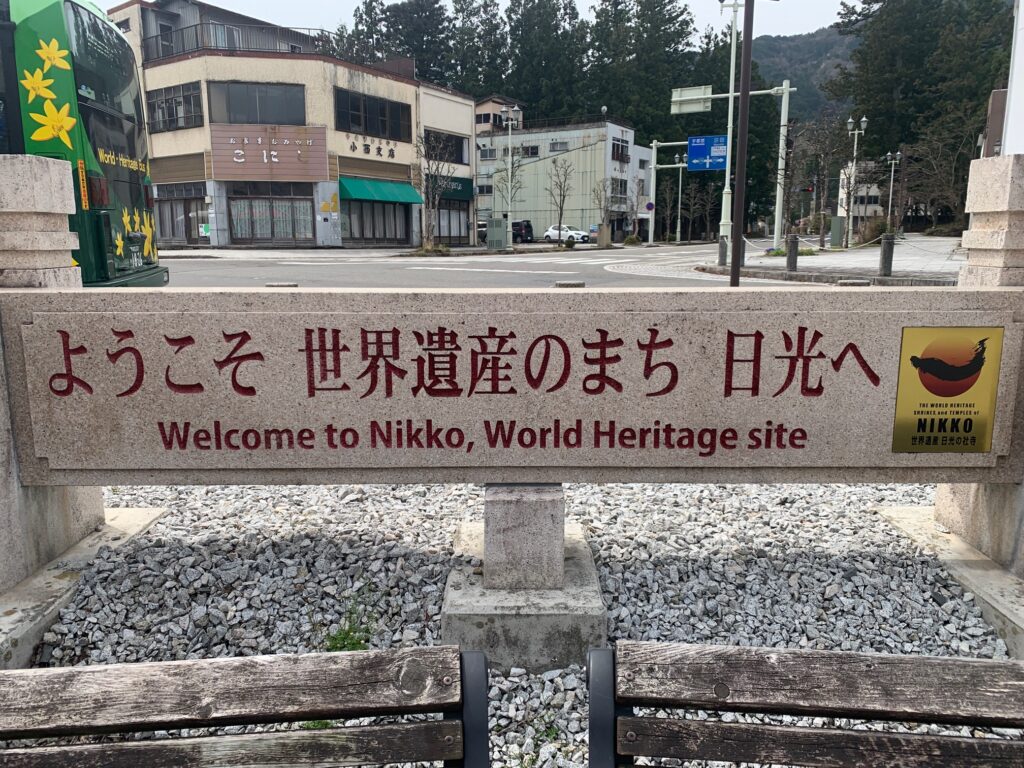Highlights
Your ultimate resource for planning a trip to the mountain town of Nikko, its many temples and shrines and the colorful Yayoi Festival. We did all the research so you do not have to.
Time of Visit: April 2025
Duration of Visit: Three Nights
Description
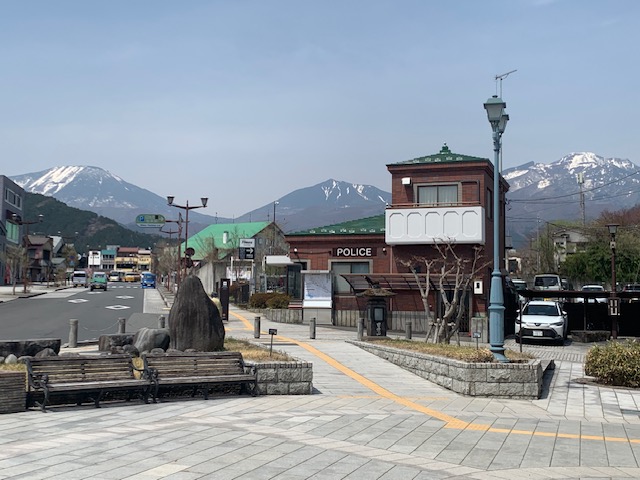

Nikko is a town in the Tochigi Prefecture about a three to four hours train ride from Tokyo. Nikko is a UNESCO World Heritage Site because of its historical, cultural, and spiritual significance.
The buildings at Nikko Toshogu Temple, Futarasan Shrine, Rinnoji Temple and Taiyuin Temple are renowned for their intricate designs, vibrant colors, and detailed carvings. As an added bonus, these shrines and temples are just short walks from each other.
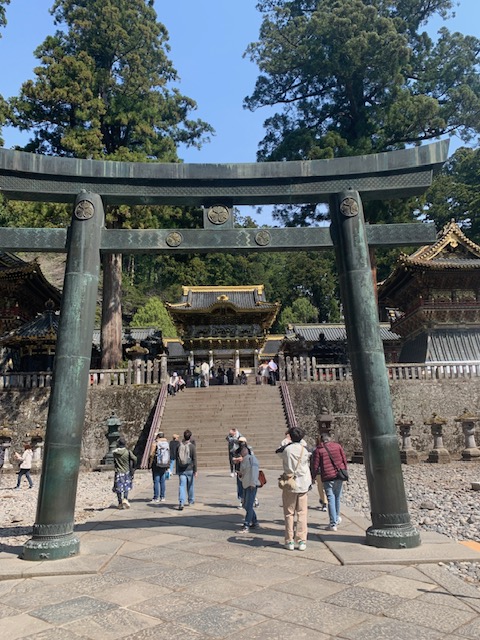

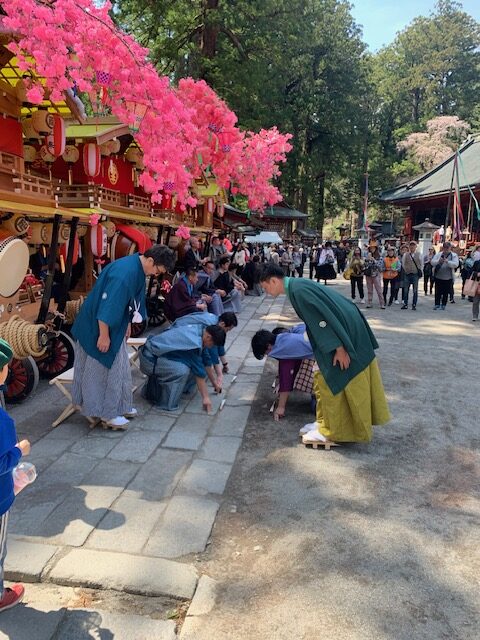

Besides temples and shrines, Nikko holds the annual Yayoi Festival. The festival celebrates traditional Japanese customs. Participants parade colorfully decorated floats and wear traditional Japanese attire. Though the festival’s atmosphere is demure, it is still an experience worth having.
Here we provide the necessary information such as activities, how to get there, where to stay and expenses. We also let you know about our unique experiences.
Activities
Temples and Shrines
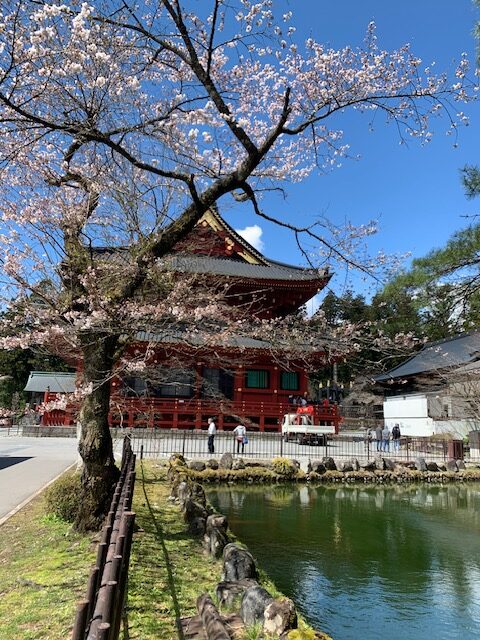

Nikko has three major temples and a mausoleum. Each temple has several buildings and shrines. To make it less confusing, we will just refer to the buildings and shrines collectively as a temple complex. The temple complexes are Nikko-zan Rinno-ji, Nikko Toshogu, Rinno-ji Taiyu-in (the mauseleum) and Nikko-Futurasan-Jinja. Of the four temple complexes, the main shrine is located in Toshogu.
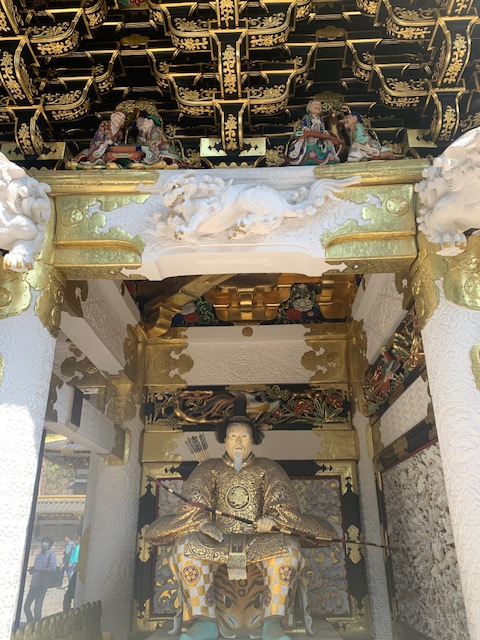

We visited Taiyuin and Toshogu during the second day of the Yayoi Festival. We picked these two temples because they have colorful structures and buildings with intricate wood carvings. The buildings and gates within the two temples are similar. Taiyuin is smaller (area wise) compared to Toshogu.
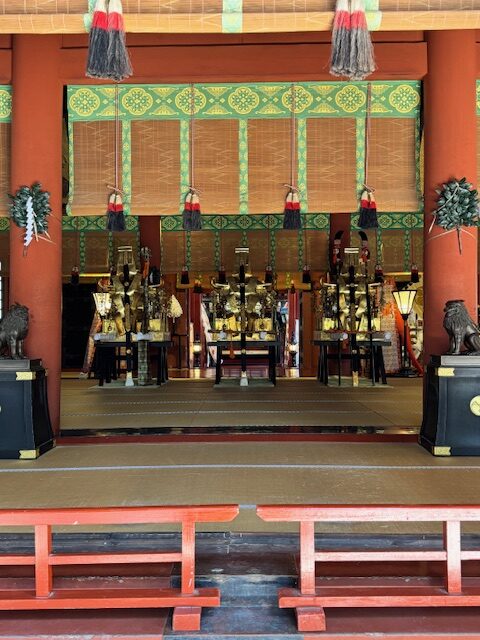

The tourist information center has a flyer for a free guided temple tour (only the guide, not the admission).
Toshogu has audio guides that can be rented for an additional fee. These were available just past the main torii gate. None were available at Taiyuin.
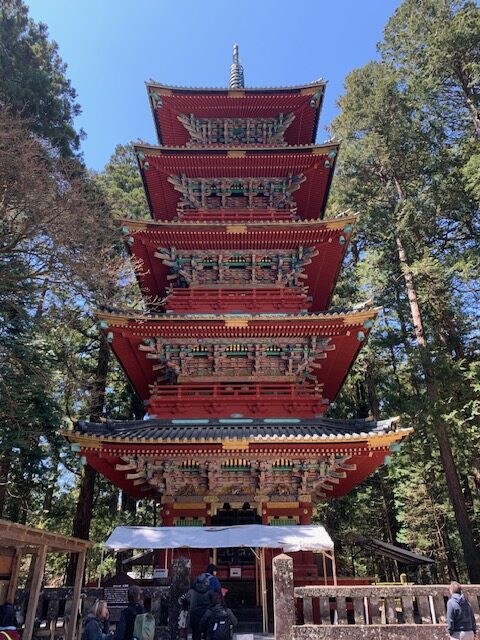

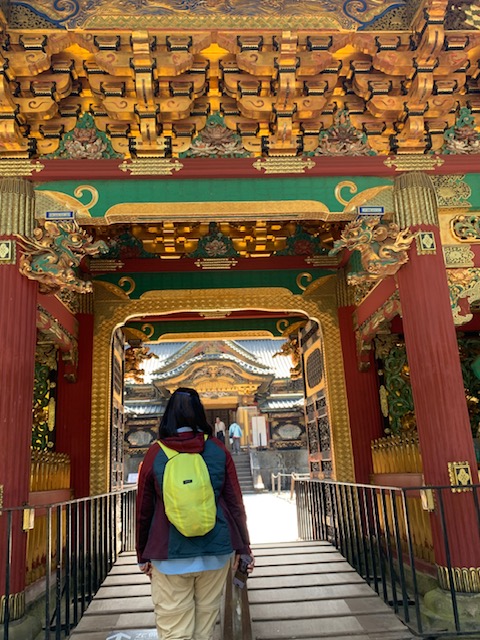

Toshogu has an inner shrine that can be reached by climbing 207 steps. It provides a good workout to get there and that is about it as the shrine is not as beautiful as the others.
Yayoi Festival
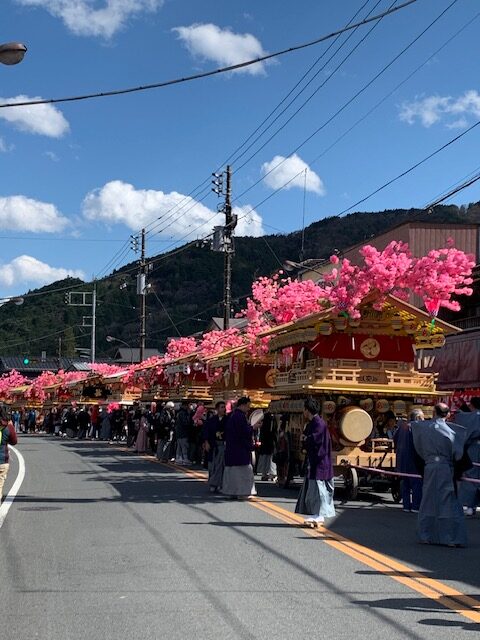

Yayoi Festival is a 1200 year old festival of the Futarasan Shrine and is held every April. The festival’s highlights are the gorgeous “Hana-Yatai” or flower floats that come from all over Nikko. The floats are called “Hana-Yatai” because they are decorated with artificial azalea flowers at the front and back. There were 11 floats during our visit, each distinctively adorned and decorated. Even the participants wore traditional garments in distinct colors and styles.
The floats are pulled from the front and pushed from the back by participants. A leader claps two pieces of wood to signal the participants to either move or stop the float.
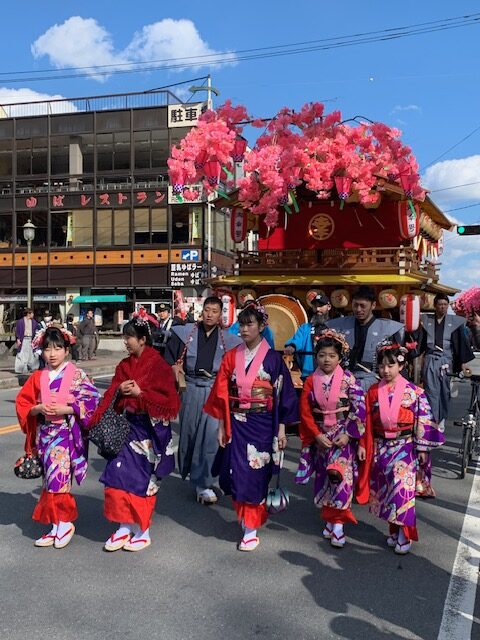

Beautifully dressed children were inside the floats. The young girls in particular wore brightly colored kimonos and their hair were beautifully adorned. The children played festival music with Fue (flutes), Taiko (drums) and other instruments.
The festival began around 1 PM on its first day (Saturday). The 11 floats came from all over Nikko and converged near the Shinkyo Bridge. A ceremony was held at the Shinyo Bridge. Afterwards, the floats were paraded around town.
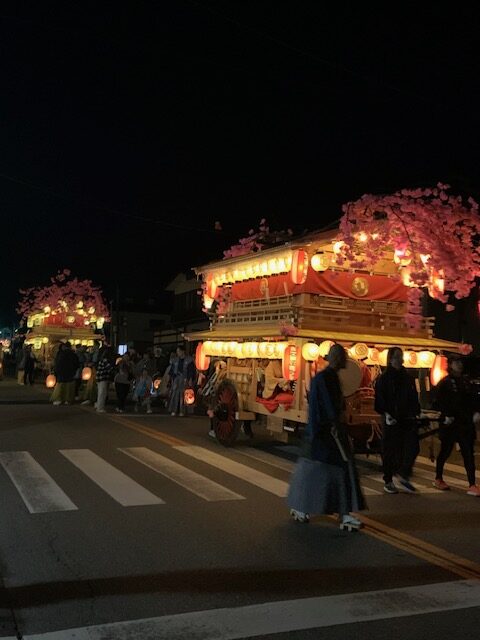

At dusk, the floats went in their own separate directions. We caught two floats by the train station with their lanterns lit. The float we followed paraded through town once more before it ended up at its designated parking spot.
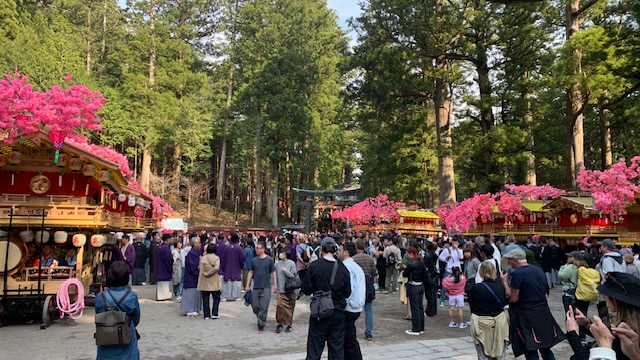

The following day (Sunday), all the floats converged at the grounds in front of the Nikko Futarasan-Jinja Shrine. More traditional Japanese ceremonies followed such as name card exchanges and hand clapping ceremony called “Nikko-jime”. Nikko-jime wraps up the festival but the floats were paraded again at dusk along the streets.
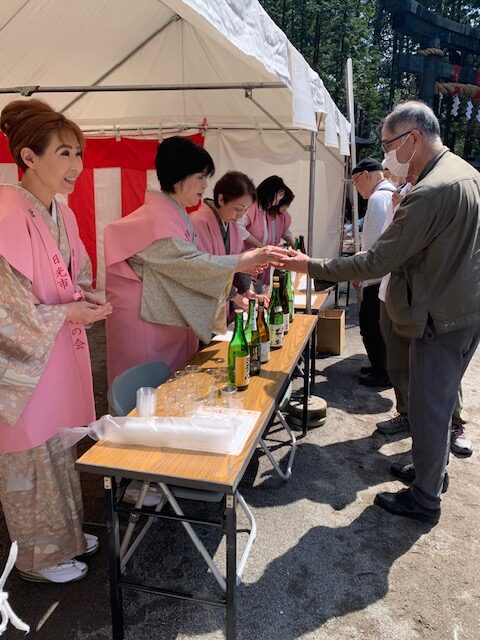

There was free sake tasting that began around 1 PM on Sunday. Different bottles of sake were displayed on the table. All we had to do was point to the bottle we wanted to try and the nice ladies dressed in kimono poured some for us. There were also food vendors that had temporarily set-up stalls just outside the shire grounds (only on Sunday). Lots of food to choose from.
If You Have More Time
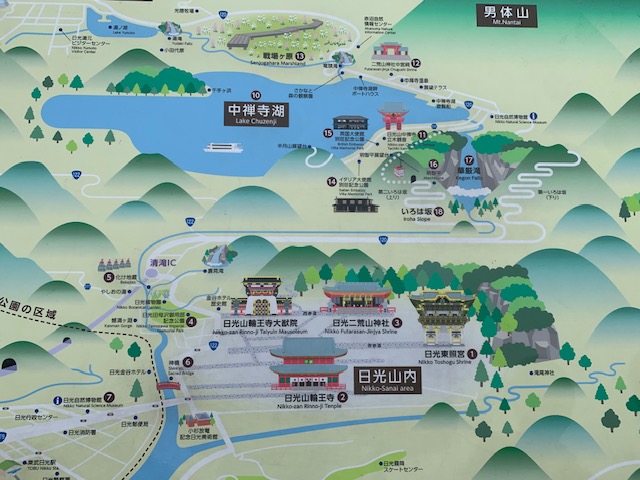

We went to Nikko solely to experience the Yayoi Festival so we did not allot any time to see other sights or do other activities besides what was written here. We think another two to four additional days would have allowed us to see other attractions around Nikko. Having only two full days in Nikko, we missed out on seeing Kegon and Yudaki Falls, Lakes Chuzenji and Yunoko and more shrines and temples.
If you like to reach your step count goal, Nikko has two historical circular walking paths. These are the Takino and Kanman Paths.
The Takino Path is approximately 5 kms (3.1 mi). It starts at the Shinkyo Bridge, goes around Toshogu and Futarasan-Jinja Shrines and Nikko-zan Rinno-ji Temple. It then continues on through the cedar forest on its way to the Takino Inari Shrine. Along the way it passes through more shrines and Shiraito Falls.
Kanman Path is also about 5 kms and starts at Yasukawa-cho, follows the Daiya River upstream on its way to the two Matsuo Basho’s Haiku Monuments. You will occasionally feel a gentle breeze coming down from the mountain while walking this section. The path goes along Route 120 on the return trip.
Tourist Information Centers
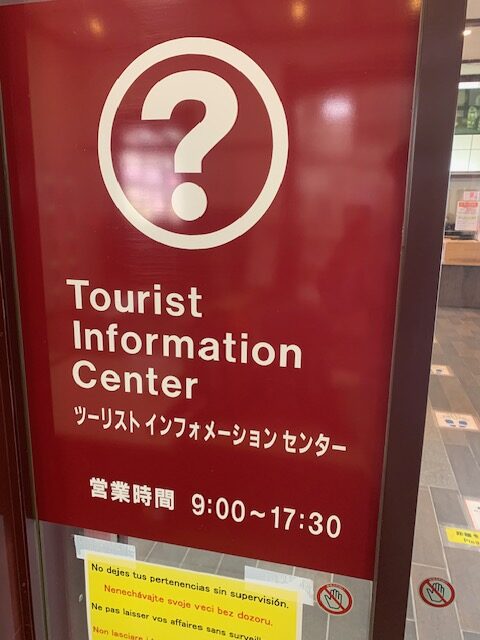

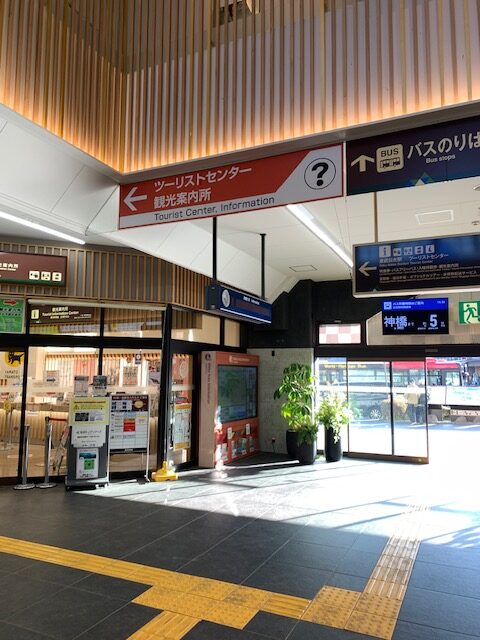

We found three tourist information centers in Nikko. There are tourist information centers at both Nikko-Tobu and Nikko Stations (two separate train stations about four minutes walk apart). There is also a tourist information center along the main road heading to Shinkyo Bridge less than 10 minutes walk from the Nikko-Tobu Station.
There is an information map outside of Nikko Station that shows the attractions in and around town. Our suggestion is to study the map and pick the places you are interested in seeing. Then ask questions about those places at the tourist information center.
How To Get There
Nikko can be reached by trains. We came from Ueno, Tokyo and it just took one train transfer to get to Nikko-Tobu Station. The journey took almost three hours and we used our Welcome Suica card to tap in and out of the train stations.
We used the “Directions > Public Transport “ information in Google Maps to know which train to board and the departure times to get to Nikko. Its information was accurate.
Getting Around
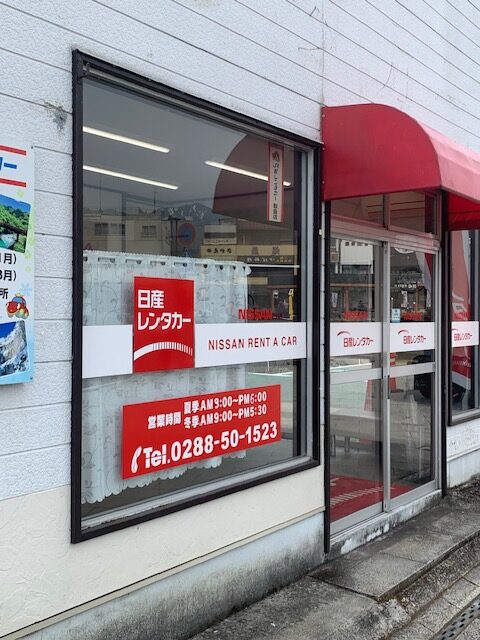

There are buses that go around Nikko and beyond. All buses originate at the Nikko Train Station. Bus fares can be paid by cash or integrated chip (IC) cards such as our Welcome Suica.
There are a couple of rental car offices by the Nikko-Tobu Train Station if you prefer to drive to the attractions. These are Nippon and Nissan Rent A Cars.
Where To Stay
If you are going to rely on public transportation, we recommend staying along the main road between the train stations and Shinkyo Bridge (where Route 119 crosses the Daiya River). The buses that serve Nikko all pass through this main road.
Also most of the restaurants are located along this main road. There are not many restaurants West of the Shinkyo Bridge. Several of them close around 4 or 5 pm. Some are even closed on certain days.
Expected Expenses
These were our expenses: Prices are in Japanese Yen (JPY), per person.
Buses
Around town, fares range from 150 to 450 depending on where you get on and off.
Outside of Town, fares can be between 1,000 and north of 2,000. Daily pass can be purchased (inquire at the tourist office) if you plan on doing a lot of riding and going outside of town.
Temples: We only visited Toshogu and Taiyuin. Toshogu admission was 1,600 while Taiyuin was 550. Credit cards can be used to pay if the automated ticket machines are available.
Food
Restaurants
Most restaurant meals range between 1,000 and 2,000. Some are better value than others. Restaurant menu prices that appear on the low side may have cover charges and small servings. Verify first before sitting down.
Some restaurants are cash only.
Convenience Stores
There are only two convenience stores in Nikko – Family Mart and Lawson. Family Mart is a short walk from Nikko-Tobu Station while Lawson is about a 10 minute walk from the Shinkyo Bridge. Both have eating areas with microwaves and hot water. Lawson has more choices for ready to heat and eat meals that cost between 300 and 600. Or you can just buy noodles in a bowl and pour hot water for around 200. Credit cards accepted.
Street food
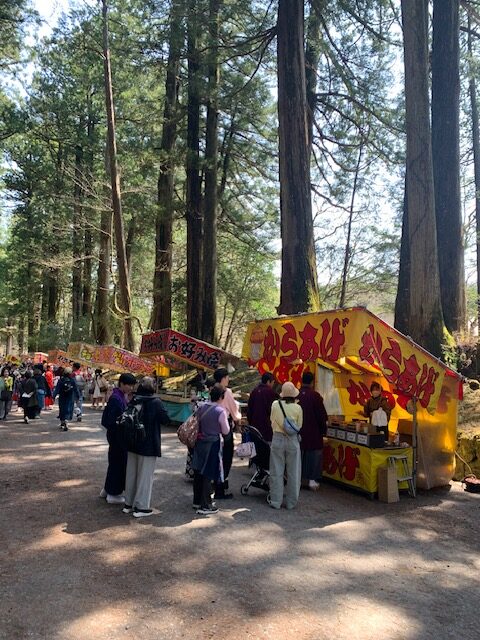

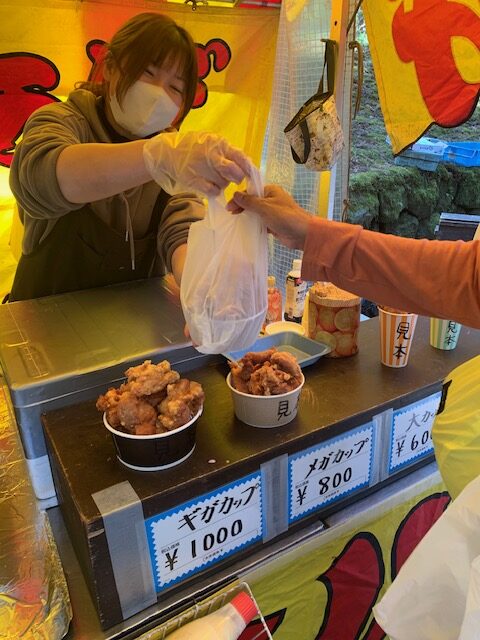

There were many street food vendors during the second day of the Yayoi Festival. Most of the food was under 1,000 – cash only. To us, the best value was the fried chicken stand. The octopus balls were mainly flour and not as good tasting.
Summary
Nikko is a nice and relatively unknown destination north of Tokyo. Nikko does get its share of foreign tourists but not in the hordes we saw in Senjo-ji temple in Tokyo or the popular temples around Kyoto (they were all packed to the extent it was no longer enjoyable).
Nikko is a World Heritage Site because of its several cultural and historical attractions. Its four temples – Futarasan, Rinno-ji, Taiyuin and Toshogu along with the Futurasan-Jinja Shrine draws visitors from all over. The buildings in Taiyuin and Toshogu are particularly colorful and ornately decorated with intricate wood carvings. Plus there are other smaller shrines and temples around Nikko as well as natural attractions such as lakes and waterfalls.
Nikko holds the annual Yayoi Festival in April. Beautifully decorated “Hana-Yatai” or flower floats are paraded through town. Participants are dressed in traditional Japanese attire down to the wooden sandals. Particularly striking were the young girls wearing colorful kimonos and hair adornments. Plus they were happy to take pictures with us.
So if you want to see Japanese temples and shrines without the crowd, head on over to Nikko. This charming town offers more than a break from the crowded attractions found in big cities like Tokyo and Kyoto.

